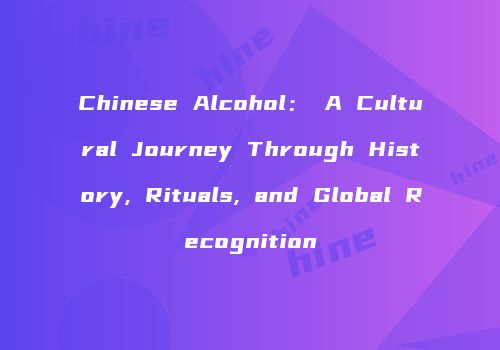Chinese Alcohol: A Cultural Journey Through History, Rituals, and Global Recognition
In the vast tapestry of Chinese culture, alcohol has always held a prominent position. The history, the rituals, and the sheer variety of alcoholic beverages in China reflect a rich heritage that is both diverse and profound. This article delves into the fascinating world of Chinese alcohol, exploring its terminology, cultural significance, and international recognition.
English Translations of Key Chinese Alcoholic Beverages
To bridge the language gap, here are some essential translations of well-known Chinese alcoholic beverages:
- Moutai (茅台酒): MOUTAI liquor, KWEICHOW MOUTAI

- Five-Grain Liquor (五粮液): Wuliangye
- Four-Seasons Wine (四特酒): Sitetan wine
- Floral Wine (花雕酒): Huadiao wine
- Laojiao (老窖酒): Laojiao wine
- Liangjiu (梁酒): Liangjiu wine
- Langjiu (郎酒): Langjiu wine
- Baijiu (白酒): Baijiu, which literally translates to "white wine," but refers to a category of Chinese spirits
- Green Bamboo Leaf Liquor (竹叶青酒): Zhuyeqing liquor
The Evolution of Moutai's International Identity
The journey of Moutai, one of China's most renowned spirits, into the global market is a testament to the evolving identity of Chinese alcohol. Introduced abroad in the 20th century, Moutai was initially known as "KWEICHOW MOUTAI," a name derived from its hometown, Kweichow Province. Following the adoption of the "Modern Chinese Pinyin System" by the Chinese government in 1958, many Chinese names were phonetically adapted to English. However, due to Moutai's already established reputation worldwide, there was no need for renaming. Thus, the "MOUTAI" name persisted, becoming synonymous with Chinese luxury spirits.
Cultural Significance of Chinese Alcohol
Chinese alcohol is more than just a beverage; it is an integral part of cultural rituals and social interactions. For instance, during festivals and important occasions, certain types of alcohol are chosen for their symbolic meanings and health benefits.
Moutai's Protected Status
Recognizing the cultural and historical value of Moutai, the Chinese government has taken measures to protect it. In 1996, the Moutai production process was declared a state secret. In 2001, it was inscribed on the first batch of National Intangible Cultural Heritage lists. In 2006, the "Moutai traditional brewing technology" was added to the first batch of National Intangible Cultural Heritage名录. Furthermore, on February 14, 2003, the original State Administration of Quality Supervision, Inspection, and Quarantine approved the geographical indication protection of "Moutai," ensuring its authenticity and origin.
The Richness of Chinese Wine Culture
China's wine culture is as vast and intricate as its history. It encompasses a multitude of brewing techniques and flavors, from the light and fragrant to the rich and powerful. The term "Chinese wine culture" in English can be translated as "Chinese culture of alcoholic beverages," highlighting the breadth and depth of this cultural heritage.
Conclusion
Chinese alcohol, with its rich history and cultural significance, has not only captivated the palates of the Chinese people but also intrigued the world. Whether it's the iconic Moutai, the diverse range of baijiu, or the ancient rituals surrounding alcohol consumption, the world of Chinese alcohol is a testament to the country's profound cultural heritage.
郑重声明:
以上内容均源自于网络,内容仅用于个人学习、研究或者公益分享,非商业用途,如若侵犯到您的权益,请联系删除,客服QQ:841144146





相关阅读
Chinese Alcohol: A Cultural Journey Through History, Rituals, and Global Recognition
2025-04-09 15:51:15In the vast tapestry of Chinese culture, alcohol h…
HINE extra白兰地为你介绍高端饮酒文化,让你成为品味女王
2025-04-09 19:56:01白兰地是一种源于法国的蒸馏酒,而HINE extra白兰地则是其中的佼佼者。作为一款历史悠久、口感独…